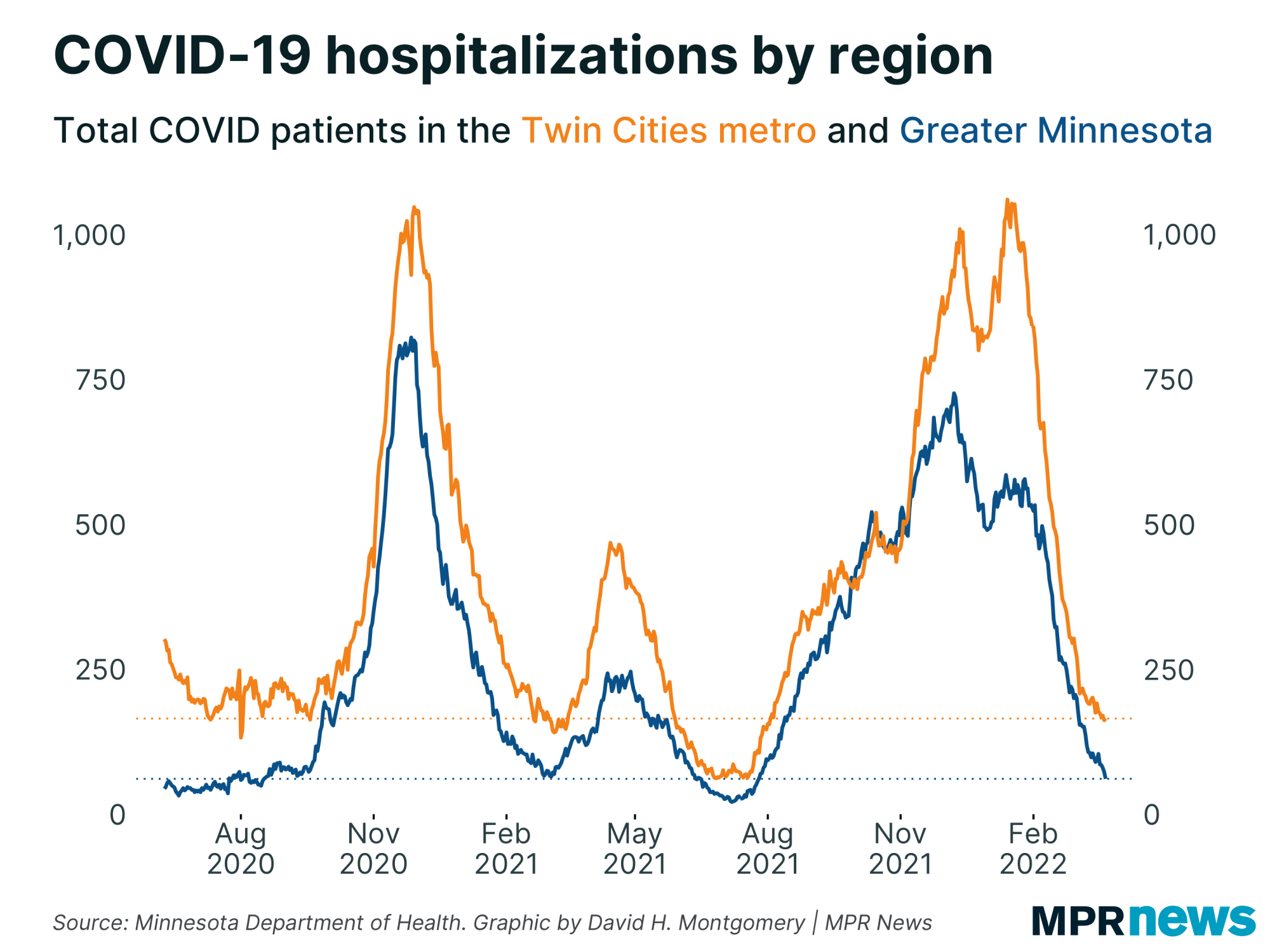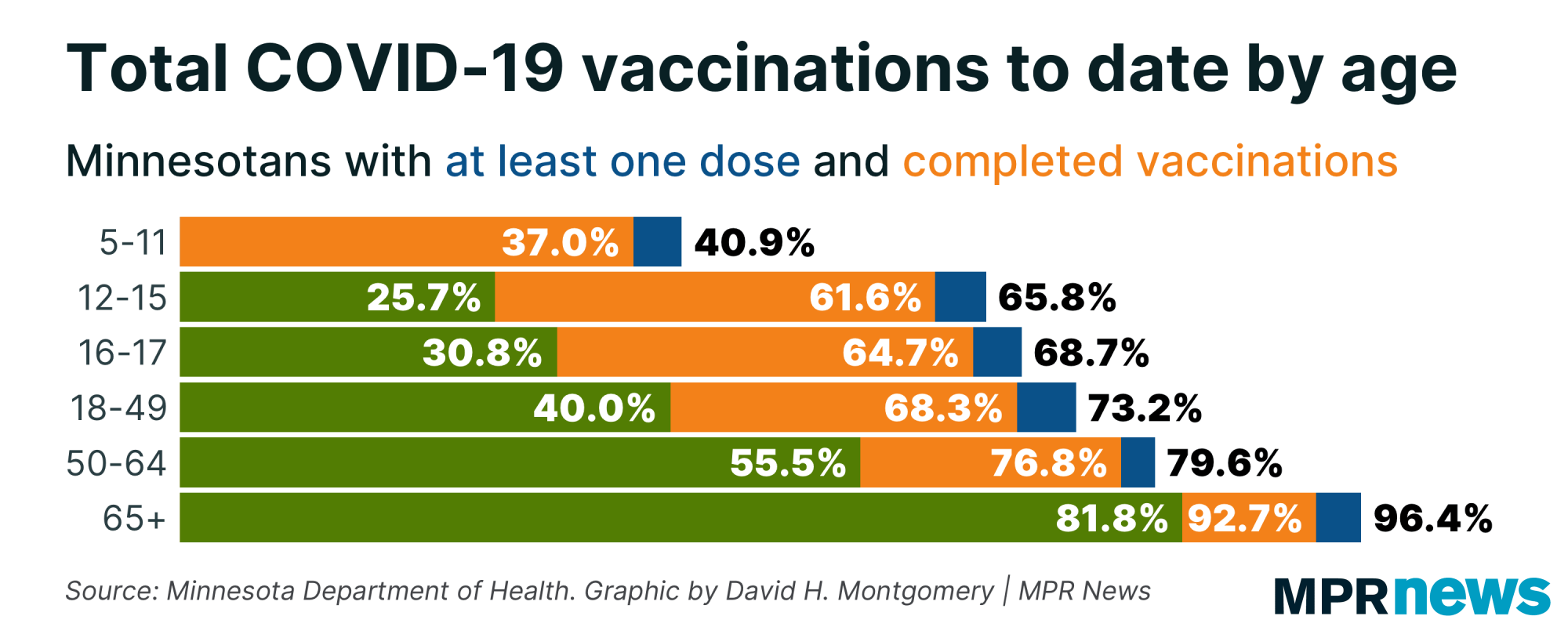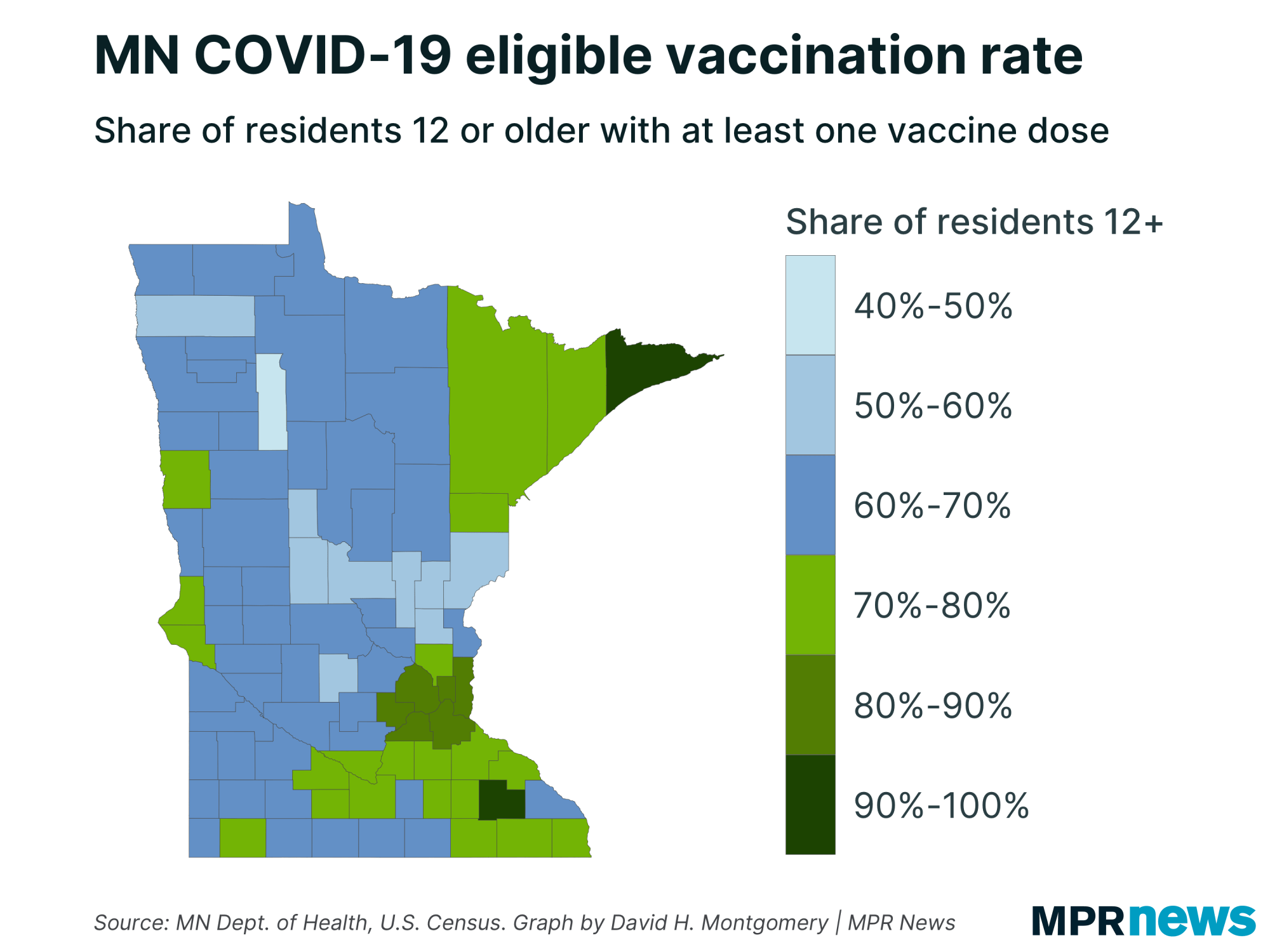Latest on COVID-19 in MN: Wastewater, case counts signal pandemic retreat

Go Deeper.
Create an account or log in to save stories.
Like this?
Thanks for liking this story! We have added it to a list of your favorite stories.
3 things to know:
801 hospitalized; 126 in ICU, hospitalizations falling quickly
New cases trending at lowest point since late October
Wastewater data shows Twin Cities COVID down to July levels
Minnesota’s newest COVID-19 numbers show more evidence of a rapidly ebbing surge. Key metrics continue to trend in the right direction, with new and active cases, positive test rates and hospital bed use all falling steadily.
An especially good sign Friday could be found in the Metropolitan Council’s latest batch of Twin Cities wastewater data: COVID concentrations this week were the lowest recorded since July, before the omicron mutation began whacking Minnesota.
Statewide, new daily cases are trending at their lowest point since around Halloween.

Overall, there are around 17,000 active, confirmed COVID-19 cases in Minnesota. That’s down dramatically from mid-January, when active cases topped 67,000.
Turn Up Your Support
MPR News helps you turn down the noise and build shared understanding. Turn up your support for this public resource and keep trusted journalism accessible to all.

Hospitalizations are still somewhat high — 801, with 126 people needing an intensive care bed — but the number have been dropping rapidly. A week ago, there were 1,052 COVID hospitalizations with 153 ICU patients.
Hospitals across the state have been stretched to the breaking point the past two months as COVID cases and other rising health care needs grew rapidly.
Hospital bed use is falling particularly fast in the Twin Cities metro area, which took the initial hit from omicron and began recovering first.

Health officials continue to plead for vigilance against the disease, including masking in indoor public spaces, as the numbers are still somewhat high. In late June, Minnesota appeared to be through the worst of the pandemic, and then the omicron variant hit hard.
The most recent map from the federal Centers for Disease Control and Prevention continues to show all Minnesota counties, except for Big Stone and Lincoln, with a high rate of viral transmission.
“What we need to come to grips with is we’re not done with the virus. It’s not done with us,” Michael Osterholm head of the Center for Infections Disease Research and Policy at the University of Minnesota, told MPR News last week.
The current wave, though, appears to be past its peak.

Minnesota’s positive test rate has been moving steadily downward, with sample data showing positivity falling significantly back closer to the 5 percent threshold of concern for state health officials. With the delays in data reporting, it’s possible the state’s back below that level already.
The state's death toll stands at 11,961 including 31 newly reported deaths. Deaths typically follow a surge in cases and hospitalizations. In past COVID-19 waves, it’s been the last of the key metrics to improve.

Thanks to vaccinations, Minnesota is better positioned now than during its fall 2020 and spring 2021 spikes: 78 percent of state residents age 12 and older have received at least one vaccination shot, with nearly 74 percent now completely vaccinated.
Officials say about 70 percent of Minnesota’s total population is now vaccinated with at least one shot, with two-thirds completely vaccinated.

The struggle continues to get first shots into more Minnesotans, especially in central Minnesota.

Dear reader,
Political debates with family or friends can get heated. But what if there was a way to handle them better?
You can learn how to have civil political conversations with our new e-book!
Download our free e-book, Talking Sense: Have Hard Political Conversations, Better, and learn how to talk without the tension.




